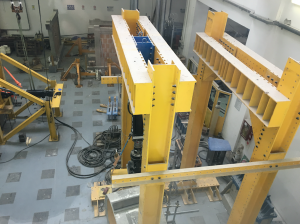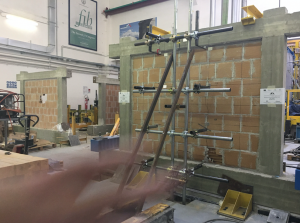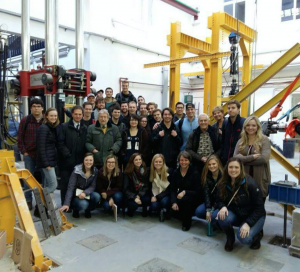As we wrap up our (short) time in Naples, we spent the day over at University of Naples- Federico II. Founded in 1224, it was the first state university in the world. While the school has 4 different schools and 26 departments, we (obviously) found ourselves in the Dipartmento di Strutture per I’Ingegneria e I’Architettura: The Department of Structural Engineering and Architecture.
Here’s a (brief) run-down of the topics covered today:
- Tower of Pisa with Carlo Viggiani, professor of geotechnical engineering
- Professor Viggiani explained how the Tower of Pisa leans due to lack of geotechnical engineering and soil mechanics knowledge during its construction.
- Construction was halted multiple timed due to economic or political reasons. During these periods of 90-100 years each, the soil had shifted underneath the tower, causing it to lean.
- The soil in the area, due to its proximity to the sea, is made up of multiple layers of clay and sand, which shifts and compresses easily. Knowing what we know now about soil mechanics, a tower of this size would not be constructed in the area.
- Throughout the last few centuries, as towers around Europe and Italy had been collapsing, there were many commissions formed to determine the best solution as to correcting the lean. Some of the attempted methods included: Liquid nitrogen freezing of the soil, pumping water into the soil, and anchoring the higher side of the tower deep into the soil, among many other ideas generated by these committees.
- The winning solution was to under excavate the soil below the north side of the tower. As Carlo pointed out, this solution was the most effective in reducing the slant, as well as keeping the integrity and respect of Pisa alive. He would know, as he was a part of the commissions since the 60’s!
- Earthquakes and Protection of Cultural Heritage in the Mediterranean with Federico M. Mazzolani, professor of structural engineering.
- As Italy is very on the edge of three tectonic plates, Eurasian, African, and Arabian, it is highly important to study the effects of earthquakes and seismic activity.
- Professor Mazzolani explained to us how Italy is a part of many other nations along the Mediterranean sea who joined together to study old, famous, and historical structures that may be at risk of collapse should an earthquake happen.
- This group of researches would make scale models of buildings and monuments, and place them upon shake-tables (see picture below) and study where damage and even collapse would occur if there was seismic movement. They would use computer imaging to illustrate points of stress, and come up with solutions to further secure the areas of concern. In a few cases, the buildings they studied actually implemented their solutions, like vertical and horizontal cable reinforcements.
After lecture, we got to tour their structures lab! (Again, as I am a future civil engineering major, I was nerd-ing out).

A view from the classroom window of the lab below. One feature of the lab was the strong floor- seen as little squares for the machinery to anchor to. This makes for stable and secure placement when machinery is in use, and flexibility of movement when needed.

The largest hydraulic press in Europe- up to 5,000 tons! The professors reassured us, “We don’t put students in here!”
That’s a wrap, Napoli! We enjoyed all 28 hours we had with you! This post is brought to you from Florence, as we arrived this evening around 7:30. Now, we look forward to a good night’s sleep and the beauty of Tuscany when the sun comes up!
Arrivedervi!




No Comments